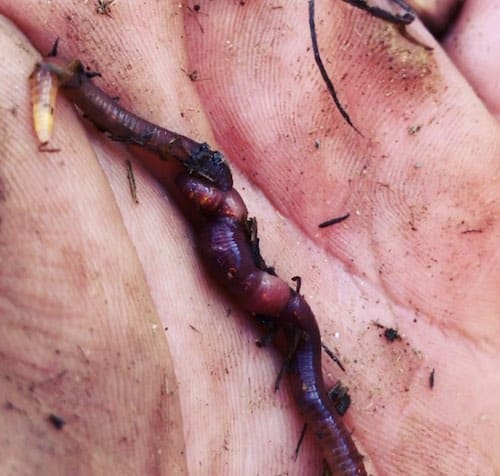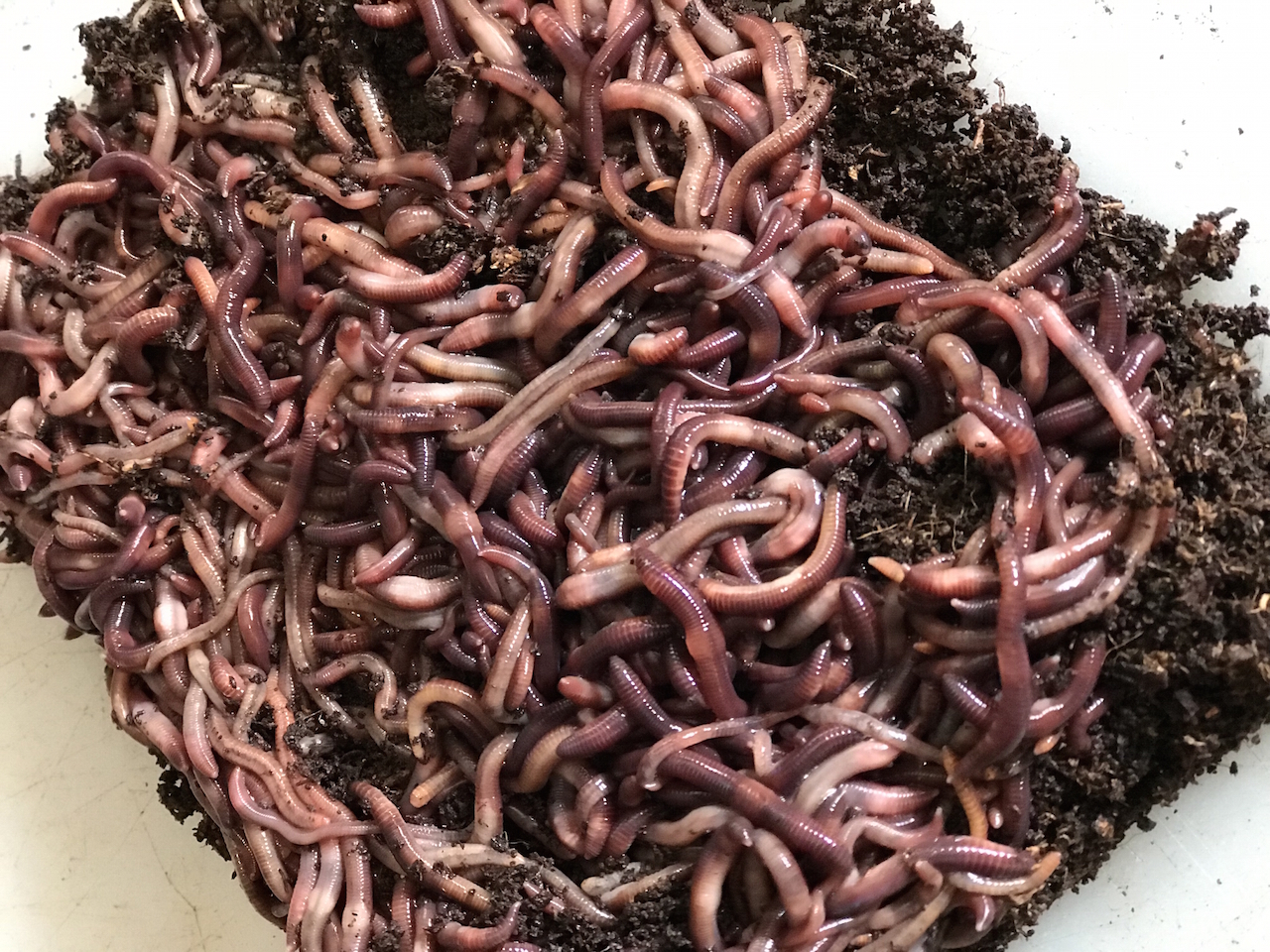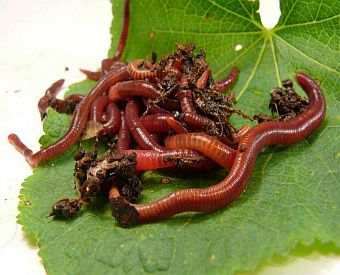Red Wiggler Worms - Perfect for Vermicomposting and Dirt Enrichment
Red Wiggler Worms - Perfect for Vermicomposting and Dirt Enrichment
Blog Article
Taking Full Advantage Of the Benefits of Red Wiggler Worms: A Comprehensive Guidebook for Home Gardeners and Urban Farmers
In the realm of sustainable gardening practices, red wiggler worms stand as unhonored heroes, silently changing organic waste right into nutrient-rich castings that can work wonders for dirt health and wellness. As home garden enthusiasts and urban farmers progressively look for eco-friendly and economical means to improve their gardens, the possible advantages of using the power of red wigglers can not be overstated. From minimizing cooking area waste to cultivating healthier plants, the utilization of these humble creatures provides a variety of advantages. By exploring the details of exactly how to successfully take care of and maximize the advantages of red wiggler worms, people can unlock a wide range of chances for enhancing the sustainability and productivity of their horticulture undertakings.
Understanding Red Wiggler Worms
Red Wiggler worms, renowned for their effective composting capabilities, are a varieties of earthworms extensively utilized in vermiculture techniques. These worms, medically known as Eisenia fetida, grow in decomposing organic material, making them optimal candidates for composting.
One secret characteristic of Red Wiggler worms is their reproductive price. These hermaphroditic creatures have both male and female reproductive body organs, permitting them to reproduce rapidly under desirable conditions. A mature Red Wiggler can generate multiple spawn in a brief period, ensuring a consistent populace within a composting system.

Establishing a Worm Bin
When establishing a worm container for vermiculture functions, appropriate preparation and focus to information are necessary for developing a conducive environment for Red Wiggler worms. Begin by picking an ideal container for your worm container.

Location the worm container in a cool, dark location away from direct sunlight and severe temperatures. Regularly check the moisture levels, including water if the bed linen feels dry or flaky. Feed the worms a balanced diet plan of vegetables and fruit scraps, preventing citrus fruits, onions, and spicy foods. By adhering to these actions, you can establish a thriving worm bin that will efficiently process natural waste into nutrient-rich vermicompost for your garden.
Feeding and Preserving Worms
Ensuring a healthy and well balanced diet plan is critical for the wellness and performance of Red Wiggler worms in a vermiculture system. It is essential to stay clear of feeding them citrus fruits, onions, garlic, dairy products, meat, and oily foods as these can be harmful to the worms or cause undesirable smells in the container.
Correct dampness levels are also critical for the well-being of Red Wiggler worms. By faithfully checking their diet, wetness, and environmental problems, home gardeners and city farmers can sustain a effective and healthy Red Wiggler worm populace for composting objectives.
Harvesting Worm Castings
To successfully extract nutrient-rich worm castings from the vermicompost, a methodical harvesting procedure is important for optimizing the composting advantages. The initial step in harvesting worm castings is to urge the worms to move to one side of the container.
After the castings have actually been collected, it is necessary to separate any type of remaining worms from the castings to avoid harming them throughout storage space or application. One reliable method is to develop cone-shaped heaps of castings under intense light. Worms will intuitively relocate away from the light, allowing for simple separation and removal.
Last but not least, the gathered worm castings must be stored in a cool, dark, and completely dry location to maintain their quality and performance as a nutrient-rich soil modification. By following read what he said these actions, home gardeners and city farmers can maximize the advantages of red wiggler worms in their vermicomposting systems.
Making Use Of Worm Castings in Horticulture
The incorporation of nutrient-rich worm spreadings right into yard soil can dramatically improve plant growth and total soil health. Worm spreadings, additionally referred to as vermicast, are an all-natural fertilizer generated by red wiggler worms as they damage down raw material. These castings are rich in vital nutrients like nitrogen, phosphorus, potassium, and advantageous germs that promote plant growth and improve soil framework.
When using worm castings in gardening, it is crucial to mix them completely into the soil or utilize them as a leading dressing around plants. The slow-release nature of worm spreadings guarantees a consistent supply of nutrients to plants over time, lowering the danger of nutrient leaching and promoting long-lasting soil fertility. Furthermore, worm castings help enhance dirt oygenation, water retention, and microbial activity, producing a healthy and balanced environment for plant origins to thrive.

Final Thought
Finally, the application of red wiggler worms in home horticulture and metropolitan farming can dramatically you could try these out benefit dirt wellness and plant growth. By comprehending how to establish and keep a worm container, feed the worms appropriately, and collect their nutrient-rich castings, gardeners can take full advantage of the advantages of these earthworms. Including worm castings into horticulture methods can boost dirt fertility and general plant efficiency. On the whole, red wiggler worms provide a effective and lasting option for boosting yard and ranch returns.
In the realm of sustainable horticulture techniques, red wiggler worms stand as unrecognized heroes, silently changing organic waste into nutrient-rich spreadings that can work marvels for soil health and wellness.When establishing a worm bin for vermiculture objectives, appropriate prep work and attention to information are important for developing a helpful atmosphere for Red Wiggler worms. The initial step in gathering worm castings is to encourage the worms to migrate to one side of the bin. Worm castings, additionally understood as vermicast, are an all-natural fertilizer produced by red wiggler worms as they damage down organic matter. By recognizing exactly how to set up and keep hop over to these guys a worm container, feed the worms properly, and harvest their nutrient-rich spreadings, garden enthusiasts can maximize the advantages of these earthworms.
Report this page